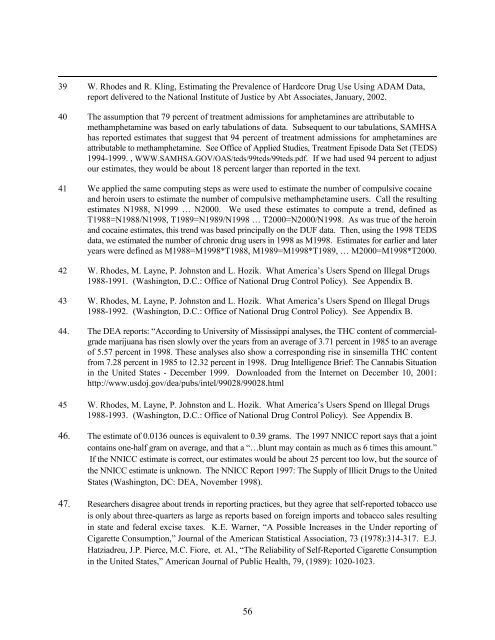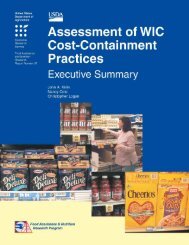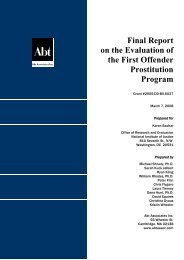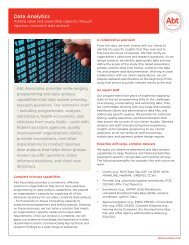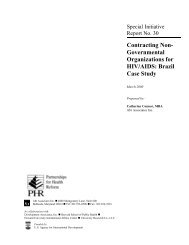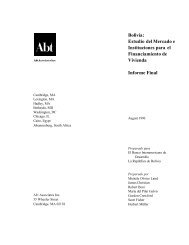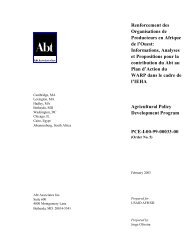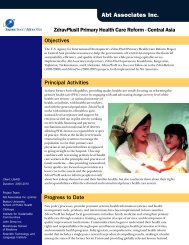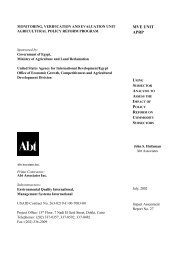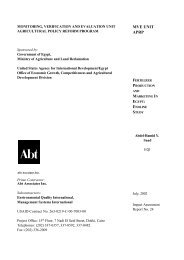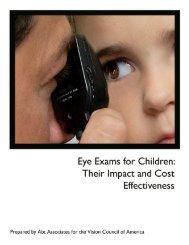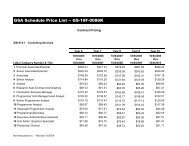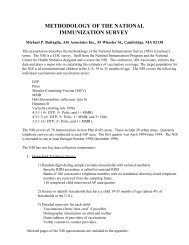What America's Users Spend on Illegal Drugs 1988-2000 - National ...
What America's Users Spend on Illegal Drugs 1988-2000 - National ...
What America's Users Spend on Illegal Drugs 1988-2000 - National ...
- No tags were found...
Create successful ePaper yourself
Turn your PDF publications into a flip-book with our unique Google optimized e-Paper software.
39 W. Rhodes and R. Kling, Estimating the Prevalence of Hardcore Drug Use Using ADAM Data,report delivered to the Nati<strong>on</strong>al Institute of Justice by Abt Associates, January, 2002.40 The assumpti<strong>on</strong> that 79 percent of treatment admissi<strong>on</strong>s for amphetamines are attributable tomethamphetamine was based <strong>on</strong> early tabulati<strong>on</strong>s of data. Subsequent to our tabulati<strong>on</strong>s, SAMHSAhas reported estimates that suggest that 94 percent of treatment admissi<strong>on</strong>s for amphetamines areattributable to methamphetamine. See Office of Applied Studies, Treatment Episode Data Set (TEDS)1994-1999. , WWW.SAMHSA.GOV/OAS/teds/99teds/99teds.pdf. If we had used 94 percent to adjustour estimates, they would be about 18 percent larger than reported in the text.41 We applied the same computing steps as were used to estimate the number of compulsive cocaineand heroin users to estimate the number of compulsive methamphetamine users. Call the resultingestimates N<strong>1988</strong>, N1999 … N<strong>2000</strong>. We used these estimates to compute a trend, defined asT<strong>1988</strong>=N<strong>1988</strong>/N1998, T1989=N1989/N1998 … T<strong>2000</strong>=N<strong>2000</strong>/N1998. As was true of the heroinand cocaine estimates, this trend was based principally <strong>on</strong> the DUF data. Then, using the 1998 TEDSdata, we estimated the number of chr<strong>on</strong>ic drug users in 1998 as M1998. Estimates for earlier and lateryears were defined as M<strong>1988</strong>=M1998*T<strong>1988</strong>, M1989=M1998*T1989, … M<strong>2000</strong>=M1998*T<strong>2000</strong>.42 W. Rhodes, M. Layne, P. Johnst<strong>on</strong> and L. Hozik. <str<strong>on</strong>g>What</str<strong>on</strong>g> America’s <str<strong>on</strong>g>Users</str<strong>on</strong>g> <str<strong>on</strong>g>Spend</str<strong>on</strong>g> <strong>on</strong> <strong>Illegal</strong> <strong>Drugs</strong><strong>1988</strong>-1991. (Washingt<strong>on</strong>, D.C.: Office of Nati<strong>on</strong>al Drug C<strong>on</strong>trol Policy). See Appendix B.43 W. Rhodes, M. Layne, P. Johnst<strong>on</strong> and L. Hozik. <str<strong>on</strong>g>What</str<strong>on</strong>g> America’s <str<strong>on</strong>g>Users</str<strong>on</strong>g> <str<strong>on</strong>g>Spend</str<strong>on</strong>g> <strong>on</strong> <strong>Illegal</strong> <strong>Drugs</strong><strong>1988</strong>-1992. (Washingt<strong>on</strong>, D.C.: Office of Nati<strong>on</strong>al Drug C<strong>on</strong>trol Policy). See Appendix B.44. The DEA reports: “According to University of Mississippi analyses, the THC c<strong>on</strong>tent of commercialgrademarijuana has risen slowly over the years from an average of 3.71 percent in 1985 to an averageof 5.57 percent in 1998. These analyses also show a corresp<strong>on</strong>ding rise in sinsemilla THC c<strong>on</strong>tentfrom 7.28 percent in 1985 to 12.32 percent in 1998. Drug Intelligence Brief: The Cannabis Situati<strong>on</strong>in the United States - December 1999. Downloaded from the Internet <strong>on</strong> December 10, 2001:http://www.usdoj.gov/dea/pubs/intel/99028/99028.html45 W. Rhodes, M. Layne, P. Johnst<strong>on</strong> and L. Hozik. <str<strong>on</strong>g>What</str<strong>on</strong>g> America’s <str<strong>on</strong>g>Users</str<strong>on</strong>g> <str<strong>on</strong>g>Spend</str<strong>on</strong>g> <strong>on</strong> <strong>Illegal</strong> <strong>Drugs</strong><strong>1988</strong>-1993. (Washingt<strong>on</strong>, D.C.: Office of Nati<strong>on</strong>al Drug C<strong>on</strong>trol Policy). See Appendix B.46. The estimate of 0.0136 ounces is equivalent to 0.39 grams. The 1997 NNICC report says that a jointc<strong>on</strong>tains <strong>on</strong>e-half gram <strong>on</strong> average, and that a “…blunt may c<strong>on</strong>tain as much as 6 times this amount.”If the NNICC estimate is correct, our estimates would be about 25 percent too low, but the source ofthe NNICC estimate is unknown. The NNICC Report 1997: The Supply of Illicit <strong>Drugs</strong> to the UnitedStates (Washingt<strong>on</strong>, DC: DEA, November 1998).47. Researchers disagree about trends in reporting practices, but they agree that self-reported tobacco useis <strong>on</strong>ly about three-quarters as large as reports based <strong>on</strong> foreign imports and tobacco sales resultingin state and federal excise taxes. K.E. Warner, “A Possible Increases in the Under reporting ofCigarette C<strong>on</strong>sumpti<strong>on</strong>,” Journal of the American Statistical Associati<strong>on</strong>, 73 (1978):314-317. E.J.Hatziadreu, J.P. Pierce, M.C. Fiore, et. Al., “The Reliability of Self-Reported Cigarette C<strong>on</strong>sumpti<strong>on</strong>in the United States,” American Journal of Public Health, 79, (1989): 1020-1023.56


